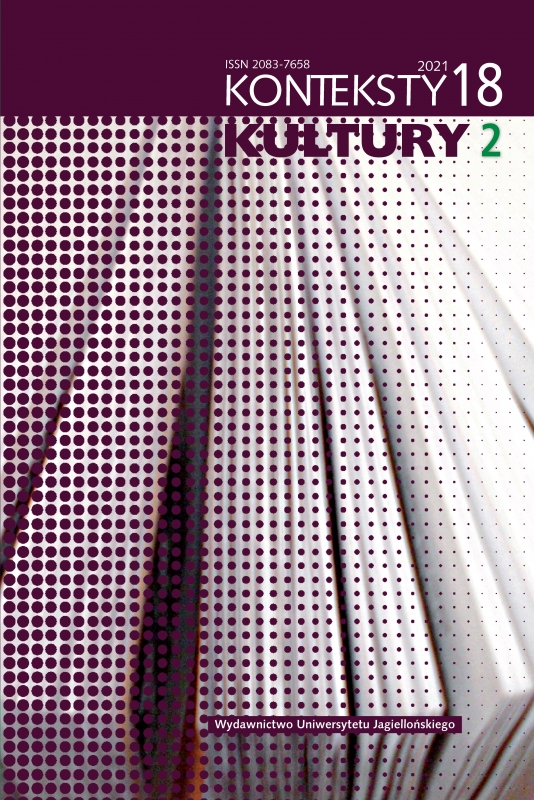„Żółte czereśnie” – matce. Córczyne wiersze Joanny Pollakówny
“Yellow Cherries” – to Mother. The Daughterly Poetry of Joanna Pollakówna
Author(s): Agata Szulc-WoźniakSubject(s): Literary Texts, Poetry, Studies of Literature, Polish Literature
Published by: Wydawnictwo Uniwersytetu Jagiellońskiego
Keywords: Joanna Pollakówna; Wanda Grodzieńska; daughter; mother; death; grief / Joanna Pollakówna; córka; matka; śmierć; żałoba
Summary/Abstract: W szkicu omawiam wiersze Joanny Pollakówny adresowane do matki, Wandy Grodzieńskiej, pisane wkrótce przed jej śmiercią i niedługo później. Szukam, wyrażonej w nich, córczyno-matczynej więzi i zastanawiam się nad specyfiką kobiecego przeżywania żałoby. Wskazuję, że utwory, które Pollakówna pisze do martwej matki, pomimo zawartej w nich perspektywy nadziei (motywy wielkanocne), pomimo pochwytującej myśl o ciągłości intuicji biologicznej kontynuacji (wątki roślinne), mimo testowanych w kolejnych utworach wybiegów, szyfrów i buntowniczego łamania zasad rządzących czasem i przestrzenią wciąż zawracają ku poczuciu straty. Zgodę na opuszczenie przez tę, która urodziła, uniemożliwia fizyczna i duchowa bliskość kobiet, wyrażająca się szczególnie w snach i wciąż żywych wizjach. Strata zapisuje się w ciele: córka doznaje jej z wciąż podobną intensywnością, wieloma zmysłami. Śmierć, którą „przygarnia w siebie”, jest już zawsze aktualna. Dla poetki oznacza to konieczność przejęcia schedy po matce, odziedziczenia jej traum.“Yellow Cherries” – to Mother. The Daughterly Poetry of Joanna PollakównaThe present article is a preliminary analysis of Joanna Pollakówna’s poems addressed to her mother, Wanda Grodzieńska, and written shortly before and right after her death. In these works, I search for the expressions of the daughter-mother connection and discuss a specifically female way of grieving. I argue that despite being written from a hopeful perspective (motifs associated with Easter), despite intuitively referring to the concept of biological continuity (plant-related motifs), despite displaying the use of tricks, cyphers, and rebellious attempts to break the rules governing time and space, the pieces which Pollakówna addresses to her deceased mother constantly return to the feeling of loss. Acceptance of the fact that the woman who birthed her is gone is made impossible by the physical and spiritual intimacy of the women, most clearly expressed in dreams and still very vivid visions. Loss becomes inscribed in the body: the daughter continues to experience it with the same intensity. The death which she “embraces within herself” is always present. This obliges the poet to take over the mother’s legacy, to inherit her traumas.W szkicu omawiam wiersze Joanny Pollakówny adresowane do matki, Wandy Grodzieńskiej, pisane wkrótce przed jej śmiercią i niedługo później. Szukam, wyrażonej w nich, córczyno-matczynej więzi i zastanawiam się nad specyfiką kobiecego przeżywania żałoby. Wskazuję, że utwory, które Pollakówna pisze do martwej matki, pomimo zawartej w nich perspektywy nadziei (motywy wielkanocne), pomimo pochwytującej myśl o ciągłości intuicji biologicznej kontynuacji (wątki roślinne), mimo testowanych w kolejnych utworach wybiegów, szyfrów i buntowniczego łamania zasad rządzących czasem i przestrzenią wciąż zawracają ku poczuciu straty. Zgodę na opuszczenie przez tę, która urodziła, uniemożliwia fizyczna i duchowa bliskość kobiet, wyrażająca się szczególnie w snach i wciąż żywych wi¬zjach. Strata zapisuje się w ciele: córka doznaje jej z wciąż podobną intensywnością, wieloma zmysłami. Śmierć, którą „przygarnia w siebie”, jest już zawsze aktualna. Dla poetki oznacza to konieczność przejęcia schedy po matce, odziedziczenia jej traum. [“Yellow Cherries” – to Mother. The Daughterly Poetry of Joanna Pollakówna: The present article is a preliminary analysis of Joanna Pollakówna’s poems ad¬dressed to her mother, Wanda Grodzieńska, and written shortly before and right after her death. In these works, I search for the expressions of the daughter-mother connection and discuss a specifically female way of grieving. I argue that despite being written from a hopeful perspective (motifs associated with Easter), despite intuitively referring to the concept of biological continuity (plant-related motifs), despite displaying the use of tricks, cyphers, and rebellious attempts to break the rules governing time and space, the pieces which Pollakówna addresses to her deceased mother constantly return to the feeling of loss. Acceptance of the fact that the woman who birthed her is gone is made impossible by the physical and spiritual intimacy of the women, most clearly expressed in dreams and still very vivid visions. Loss becomes inscribed in the body: the daughter continues to experience it with the same intensity. The death which she “embraces within herself” is always present. This obliges the poet to take over the mother’s legacy, to inherit her traumas.]
Journal: Konteksty Kultury
- Issue Year: 18/2021
- Issue No: 2
- Page Range: 209-231
- Page Count: 23
- Language: Polish

